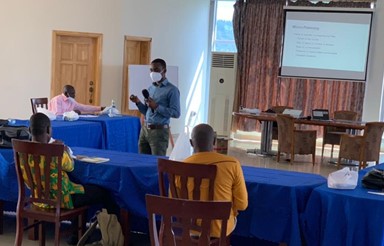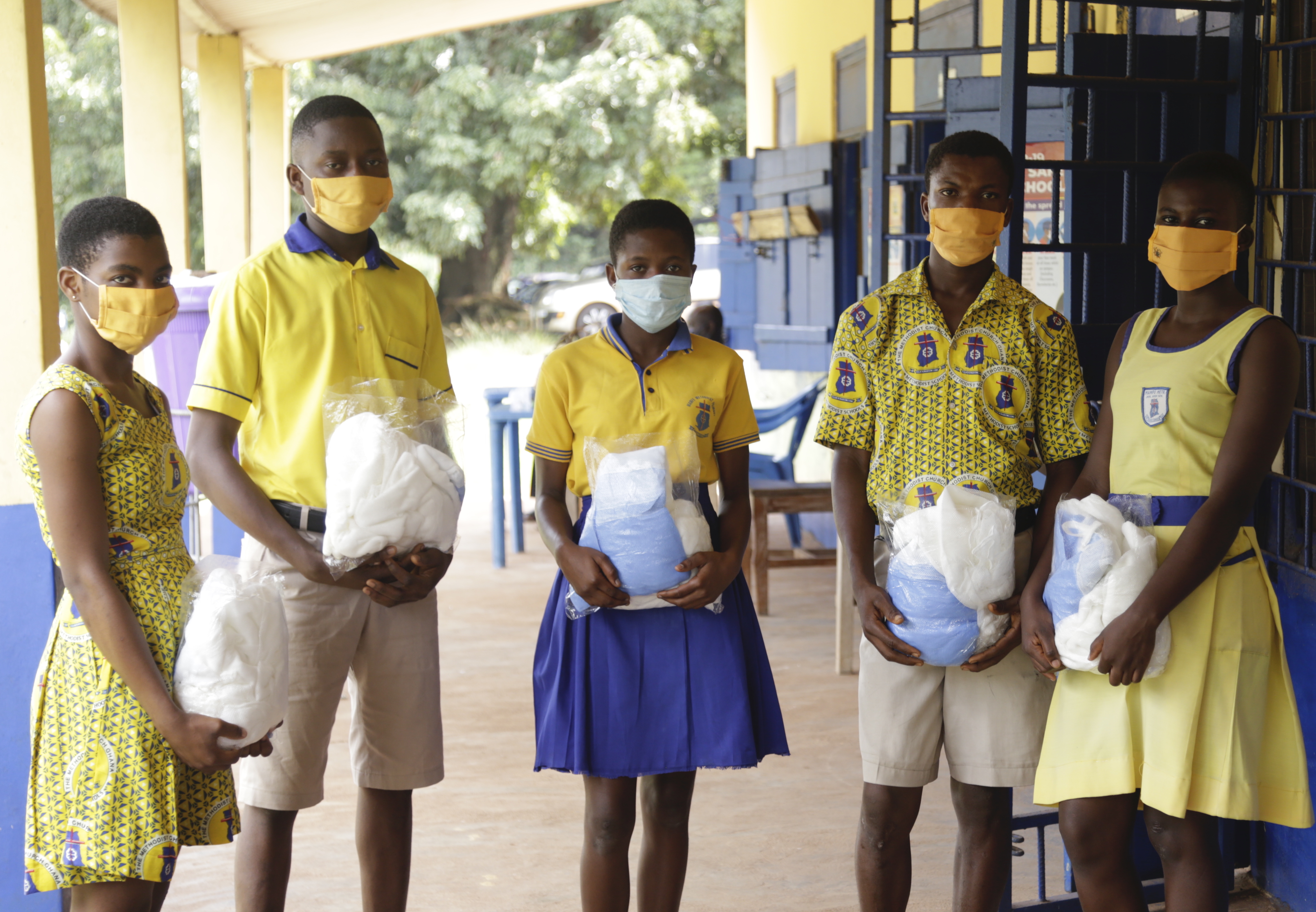Ghana

Passionate. That’s how one would describe Prince Owusu’s commitment to fighting malaria. For nearly two decades, Prince has promoted the use of bed nets across Ghana. With a Master of Science in Development Management from Kwame Nkrumah University of Science and Technology and a Master of Business Administration from the University of Wales, Prince is deeply dedicated to bringing insecticide-treated nets (ITNs) to those most vulnerable to the deadly disease. Recently, Prince talked about his work as PMI VectorLink’s ITN Lead and what led him here.
What is your personal experience with malaria?
In the past, I experienced at least two episodes of malaria a year. However, I’ve had no malaria for the past 5-6 years. As a parent, I’ve had a few unpleasant experiences with my children suffering from malaria. Fortunately, they hardly ever get malaria now. Our household malaria prevention does not only revolve around sleeping in ITNs but also ensuring a minimum or no entry of mosquitoes indoors. I make sure doors are closed when not in use and that the window screens have no holes. We also make sure there are no stagnant waters around the house that could serve as breeding places for mosquitoes.
Additionally, my work interactions with pregnant women and children suffering from malaria has made me very passionate about promoting malaria prevention efforts among households. I have a strong passion in seeing malaria-free healthy households so that children, pregnant women and all members are healthy and can go about their normal duties.
What is your role as the ITN Lead for the PMI VectorLink Project?
My role is to ensure all ITN-related malaria prevention planned activities are implemented and achieve high quality results. I work with the National Malaria Control Program (NMCP) vector control team to ensure households obtain ITNs through mass campaigns and routine channels, such as health facilities and schools. I also develop social and behavior change interventions to promote consistent ITN use and care among household members in efforts to reduce malaria. A key intervention being implemented is encouraging school children to drive ITN use and care among their peers, parents and in communities through drama and other community engagements.
How did you get involved with malaria prevention?
I’m a trained agriculturalist and started my career as an agricultural marketer. In that role, I was introduced to insecticides for bed net treatments. At the time, we didn’t have long-lasting insecticide treated nets. Increasingly, I became more interested in public health.
What do you find most challenging about your job?
There are basically two challenges: ensuring ITNs reach every household and closing the gap between ITN ownership and use.
What is challenging about reaching every household?
If we distribute ITNs through the routine channel of health facilities, we are targeting children receiving immunizations and pregnant women. We can miss a lot of people that way. Also, in remote areas, the terrain can be rough. Health workers will often use motorbikes when larger vehicles can’t travel the roads. There are times that the motorbikes don’t have the capacity to carry the adequate number of nets needed.
During mass distribution of nets, we have to think about how we can reach every household. Households need to be registered in advance so that we know how many nets are needed. Registration officers are allocated to communities. If community boundaries aren’t well-marked, pockets of households may not be registered, and they can miss out on receiving a net. Other times, people may not be home during the days to be registered. So, we have to be sure we return to these households in the evenings or on the weekends. Furthermore, the most vulnerable may not have houses.
How does someone without a house get and use a net?
We demonstrate how nets can be used in open spaces. For instance, long distance truck drivers often park by the roadside and sleep under their trucks near a fuel or police station for security reasons. We show the drivers how they can hang the net under the truck to protect themselves from mosquitoes.
Can you talk about the barriers to closing the gap between ownership and use of ITNs?
The project has developed behavior change interventions to increase use. For example, in the central region of Ghana, we’ve trained community health workers and midwives to serve as ITN champions. They model good ITN behavior and wear a badge that says, “I sleep under an ITN every night, and I recommend you do the same to protect yourself and your household.”
We also use posters to communicate the information. When communities meet, we ask influential leaders, such as the village chief, to promote positive ITN behavior among community members.
What has surprised you most about working with PMI VectorLink?
The level of dedication and passion that drives what we do as a project. I call it the VL work culture that ensures each employee is motivated to bring out his/her best. This culture also has room for creativity rather than micromanagement.
What impact have ITNs had in Ghana?
Ghana has seen tremendous decline in malaria morbidity and mortality. This can be attributed to multiple malaria prevention and control interventions, with the distribution of ITNs as a key intervention. ITNs provide a physical barrier so the mosquito can’t reach you. ITNs also repel mosquitoes and knock them down, which reduces the number of mosquitoes.
How has distribution changed with COVID-19?
We’ve had to make a lot of adjustments to the way we plan and implement malaria prevention activities. Key among these is the adoption of virtual trainings for regional and district level officers. During the implementation of the 2020 schools ITN distribution, training of regional and district officers was done virtually. We had to conduct in-person trainings for circuit officers with strict handwashing protocols and social distancing (2m apart). Additionally, masks were provided to all participants.


